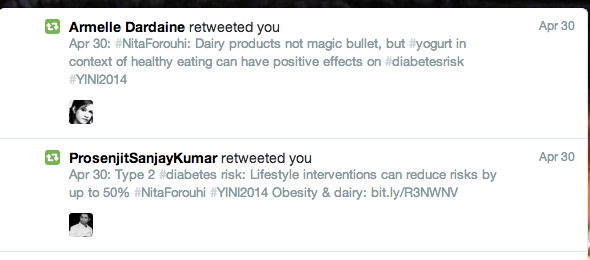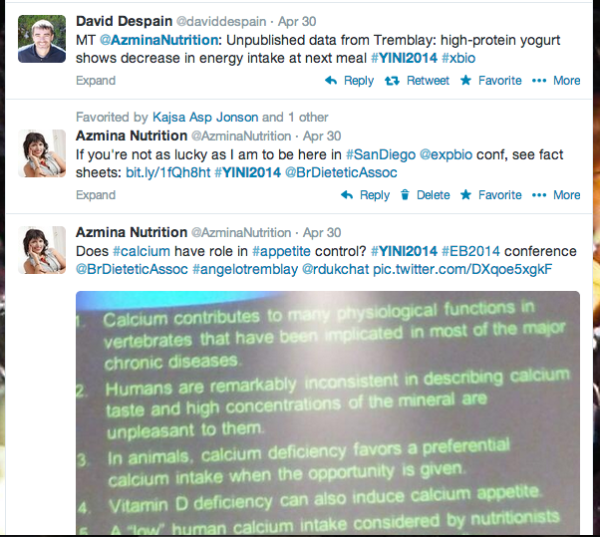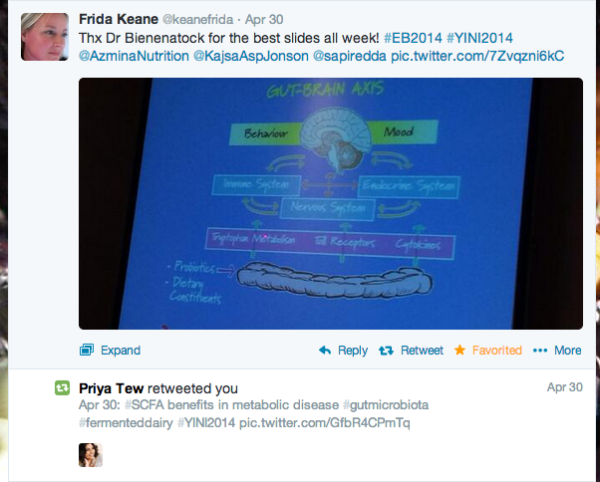I am passionate about the value yogurt brings to balanced nutrition and when I was invited to attend the 2nd Global Summit on the Health Effects of Yogurt in (wait for it) San Diego, I didn’t need much arm-twisting.

San Diego Convention Centre
The programme was packed with eminent speakers including Angelo Tremblay (Laval University Canada), Nita Forouhi (University of Cambridge School of Clinical Medicine) and the distinguished Professor John Bienenstock (McMaster University). The morning started as you’d expect it, with a refreshing yogurt and berry parfait, just enough to get those digestive juices ready for an avalanche of evidence-based insights on yogurt and health.
Here I’ll share some key learnings and give you a flavour of the #YINI2014 twitter conversations during the 4-hour seminar.
1. Yogurt and Diabetes.
Mauro Fisberg kicked off the day by discussing a survey from San Paulo which showed that the majority of yogurt eaters were non-diabetic, non-hypertensive and interestingly had experienced more years of study compared to those not eating yogurt regularly. Both Fisberg and Nita Forouhi hypothesised that yogurt may have a role in the prevention of chronic disease. More on .
2. Dairy Protein and Satiety.
One of my current special interests is satiety – what type of food influences our feelings of fullness and hence may have a useful role in weight management. Angelo Tremblay spoke about population studies that demonstrate a regular intake of yogurt is related to a decrease in body weight over time. Dairy proteins have been shown to help promote satiety, and yogurt also gives you important nutrients like calcium, indispensable amino acids and iodine.
3. Yogurt and heart disease.
Luis Moreno shared his research findings on the role of dairy protein on cardio-vascular disease in young people. Those who ate milk and yogurt-based foods had a lower waist circumference. The risk of heart disease was lower in girls who ate more dairy foods.
4. Yogurt protein and muscle.
Protein has a wide variety of beneficial effects and foods vary in the quality of protein they provide. Casein & whey protein from dairy foods like yogurt are both excellent sources of all the essential (non-dispensable) amino acids. Whey protein is also one of the richest sources of leucine, which directly affects muscle protein synthesis.

You need to eat less whey compared to other protein sources to meet your EAA requirements
5. How much protein is optimal?
The Yogurt Summit was part of the huge Experiment Biology 2014 (EB2014) Conference and I attended the EB2014 protein workshop: Although there are guidelines on recommended amounts of protein we should aim to eat in a day, studies suggest that those who eat more than 1gram/kg body weight appear to have higher bone mineral density and better muscle development. Higher protein weight management diets have also been associated with greater fat loss. So, we need to consider
And the prize for most colourful slides goes to…
I end with a couple of nice quotes from the summit:
- “A healthy microbiota (gut bacteria) helps us harvest the nutrition from the food we consume”.
- “Yogurt is milk with lactose digested”. (Check out this cool infographic on).
Conference over…time for a brief chill in sunny California! Thanks to Yogurt in Nutrition Initiative for inviting me.







